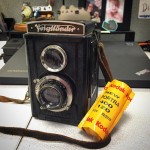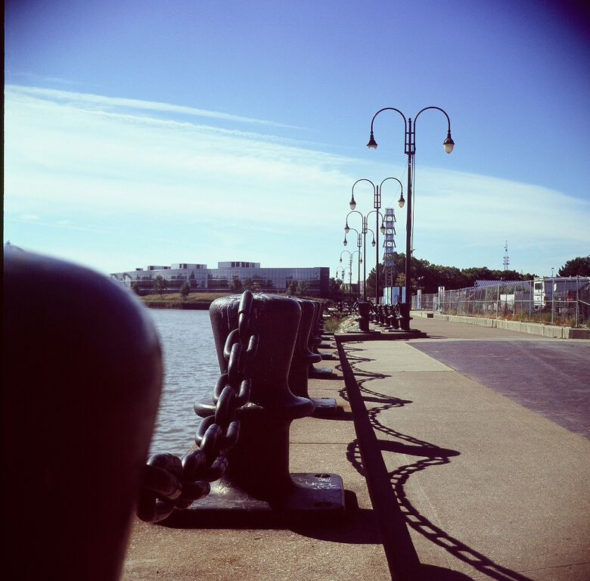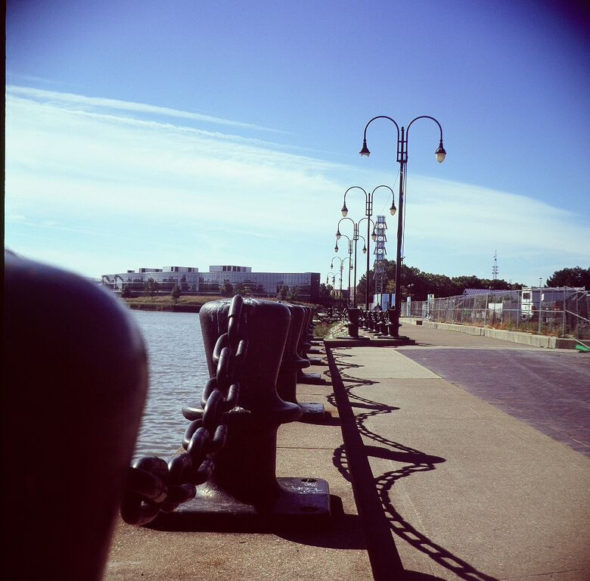 Last year, I bought an earlier model of the Voigtländer Brillant (technically the Brilliant, as the model I bought was the English variant) when I had intended to buy the Brillant V6. This June, I finally got my hands on the V6.
Last year, I bought an earlier model of the Voigtländer Brillant (technically the Brilliant, as the model I bought was the English variant) when I had intended to buy the Brillant V6. This June, I finally got my hands on the V6.
As a lover of vignetting and slightly quirky focus, I found it well worth the wait.
I had to consult the manual (thanks again, Mr. Butkus), but I finally got the thing loaded and figured out how to work the catch. Hold it down while winding on, then when you’re ready to take a picture, cock the shutter, fire, release the catch and wind the knob (much like the Argus C3), then the winding knob stops automatically for the next frame. It took me several frames to get the hang of how to release the catch and wind the film with the same hand.
The zone focus markings on the lens barrel are 1m, 1.5m, 2m, 4m, 8m, and infinity. Despite my past experience with zone focus, I don’t think I’m terribly great at guesstimating distance in meters (or yards) — so if something was far away, I just called it eight meters. (Focusing on infinity is notoriously pointless, I’ve found.) Looking at the depth of field chart that the manufacturer so helpfully printed on the camera, I figured I’d be OK for sharp photos except for some where I focused at the minimum (unmarked) focusing distance — and most of them turned out OK, too.
I didn’t even bother using the Light Meter app on my phone — I rocked the Sunny 16 rule, since, well, it was VERY sunny. I expected that some exposures would be over or under, but they actually came out just fine. Apparently Portra 400 has enough latitude to grant me some leeway in sunshine and shadow.
The vignetting on the upper corners is extreme, but I was pleased with the sharpness of focus at all the distances I tested. There’s some softness especially on the far right side of the frame, but it’s far enough to the edge of the frame that I won’t need to consider it when composing a photo. (Not like the metal Brilliant or either of my Holgas.)
One thing I did notice in that first test roll was some weirdness when focusing at close distances. There’s a 1-meter marking on the lens barrel, but the focusing ring can turn past that marking. Was it actually focusing closer? Time to take a second test roll, this time focusing on the same scene at different distances.
I went out in mid-October, loaded up with some Velvia 100 and a few ideas of some compositions that might work well focused differently. I planned to photograph three scenes at four focusing distances each: less than 1m, 1m, 8m, and infinity. I intentionally hadn’t taken any photos focused on infinity in the first roll, because infinity just doesn’t work out well on most of my cameras.
When my roll ended after eight exposures (nine, actually, because I forgot to advance and double-exposed one), I realized I’d forgotten to trust the automatic catch on the film advance. I already felt like this might be a waste of a roll, but that really exacerbated the feeling.
It did answer my questions, I think, even though I didn’t get as many sample comparison images as I’d wanted.
I didn’t have a tripod or any sort of brace, so I could only try to compose the shots identically. I thought I’d been a little more accurate, but… oh, well. I did stand the same distance away from the fence for both frames, and at the same angle, so we can at least see that the closest in-focus link actually appears to be marginally closer to the left of the frame in the one-meter focus than in the less-than-one-meter focus. I also prefer the bokeh of the Fifth Third Bank signage in the one-meter version. So, from this Very Limited Sample, I think I won’t be turning the focus past the marked one-meter point.
The 8-meter focus versus infinity actually surprised me, because the faraway building and light posts are noticeably sharper when focused on infinity. However, the closer objects, like the chains in the foreground, are slightly less sharp, which I suppose makes sense. I rarely need to focus on infinity, but it’s good to know that it’s an option with this camera — again, with a Very Limited Sample.
Overall, I’m very pleased with the Voigtlander Brillant V6, and I understand why others are, too. When I’m looking for a TLR (OK, pseudo-TLR) with zone focus instead of just a box camera, I’ll be taking the V6 over the metal English Brilliant or the Brownie Reflex 20.







